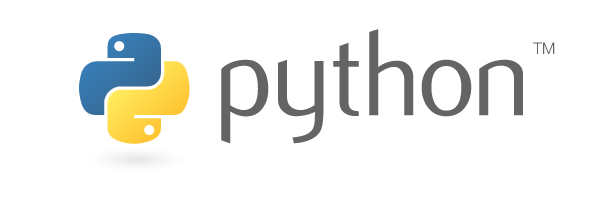
Think the technical challenges are bad? Wait until you try upgrading Python in a Fortune 500 company. Everything I've told you so far gets multiplied by bureaucracy, compliance requirements, and committees that meet to schedule meetings about scheduling meetings.
Let me tell you about our "strategic Python migration initiative" that turned into a 18-month death march through enterprise bureaucracy hell. If you're a Fortune 500 company thinking about upgrading to Python 3.13, buckle up buttercup.
The Planning Meeting That Destroyed Souls
It started innocently enough. "Let's upgrade to Python 3.13 to stay current." Six months and 47 PowerPoint presentations later, we had a 200-page migration plan that nobody read and a budget that made the CFO cry.
What the consultants told us:
- "Seamless migration with minimal disruption"
- "12-week timeline with proper risk management"
- "Around $150K total budget for dev team training"
What actually happened:
- Way over a year of pure chaos
- I think the total cost was over 2 million - nobody wants to give me exact numbers, but it was way more than budgeted
- Multiple developers quit mid-project
- Production outages that made management very unhappy
The Dependency Hell That Consumed My Sanity
Our "simple" internal Python application had like 50 direct dependencies and a shitload of transitive ones - I think someone counted over 300. pip-audit found 23 packages that didn't support Python 3.13, including a critical authentication library that hadn't been updated since 2019.
The procurement team took 4 months to approve alternative libraries. Legal needed to review every new license. Security wanted penetration testing on each replacement. By the time we got approval, Python 3.13.2 was out and half our approved alternatives had breaking changes.

Real enterprise dependency timeline:
- Month 1-2: Identify incompatible packages
- Month 3-6: Find alternatives and get procurement approval
- Month 7-10: Security reviews and legal approvals
- Month 11-12: Integration testing reveals new incompatibilities
- Month 13-15: Second round of approvals for emergency fixes
- Month 16-18: Finally deploy, immediately find more problems
The Compliance Nightmare Nobody Warned About
Oh, you thought upgrading Python was a technical decision? Adorable.
SOC 2 compliance: The auditors wanted documentation proving Python 3.13 wouldn't affect our security posture. This required formal risk assessments, security testing reports, and sign-offs from 7 different stakeholders.
PCI DSS: Our payment processing had to be re-certified because we changed the runtime environment. Cost: $80K and 3 months of consultant time.
HIPAA: Healthcare data flows required new privacy impact assessments. The compliance team insisted on pen testing the entire application stack because "Python version changes could introduce new attack vectors."
We spent a fortune on a "comprehensive performance testing suite" from a consulting firm. Their beautiful load testing setup found that Python 3.13 was faster than 3.12 under synthetic workloads.
Reality check: our production traffic patterns were nothing like the synthetic tests. Real user sessions with our Django app were slower due to ORM query changes and Redis connection pooling issues.
The memory usage? Holy shit. Our Kubernetes clusters needed a massive capacity increase. That's a huge bump in AWS costs that nobody budgeted for.
The Great Monitoring Clusterfuck

DataDog told us their agent supported Python 3.13. What they didn't mention was that custom metrics collection was broken for the first 3 months. Our dashboards showed everything was fine while the application was literally on fire.
New Relic's Python agent crashed our application during peak traffic. Turns out there was a memory leak in their instrumentation code that only manifested under high load with Python 3.13's new garbage collector.
We ended up running blind for 6 weeks while we sorted out monitoring issues. Try explaining to the C-suite why you can't tell them if the application is working.
Bandit static analysis: Broke completely. The version that supported Python 3.13 flagged 847 "security issues" that were false positives due to API changes. Took 2 months to update our security pipeline.
Container scanning: Twistlock couldn't scan Python 3.13 base images for the first 4 months after release. Security refused to approve deployments until this was fixed.
Runtime monitoring: Our RASP solution Contrast Security didn't support Python 3.13 until 8 months after release. We had to disable runtime protection during migration.
The Real Enterprise Timeline
Forget the consultant timelines. Here's what actually happens:
Months 1-6: Planning, approvals, and arguing about budgets
Months 7-12: Dependency hell and procurement delays
Months 13-18: Testing, compliance, and putting out fires
Months 19-24: Gradual rollout while fixing monitoring
Months 25-30: Clean up the mess and document lessons learned
What I'd Do Differently (If I Had Another Life to Live)
Start with a smaller scope. We tried to upgrade 47 services at once. Big mistake. Pick 3-5 non-critical services and learn from the pain first.
Budget 3x your initial estimate. Everything costs more and takes longer in enterprise environments. Infrastructure, tools, people, compliance - it all adds up.
Get compliance involved early. Don't wait until month 12 to discover you need regulatory approval for runtime changes.
Test the rollback procedures. We spent so much time planning the migration that we never tested going backwards. When shit hit the fan (and it did), rollback took 8 hours because nobody knew the procedure.
Hire external expertise. Your team knows your application, but they don't know Python 3.13's edge cases. Contractors who've done this before are worth every penny.
Bottom line: enterprise Python upgrades are political projects disguised as technical ones. Plan accordingly, budget conservatively, and remember that job security is more important than being on the bleeding edge.
The brutal truth: If you're reading this at a big company, you're probably 18-24 months away from actually running Python 3.13 in production. That's not a failure - that's reality. Use that time wisely. Learn from other people's mistakes, wait for the tooling to mature, and document everything thoroughly because the next person to touch this will be just as confused as you are right now.

 Use the
Use the 